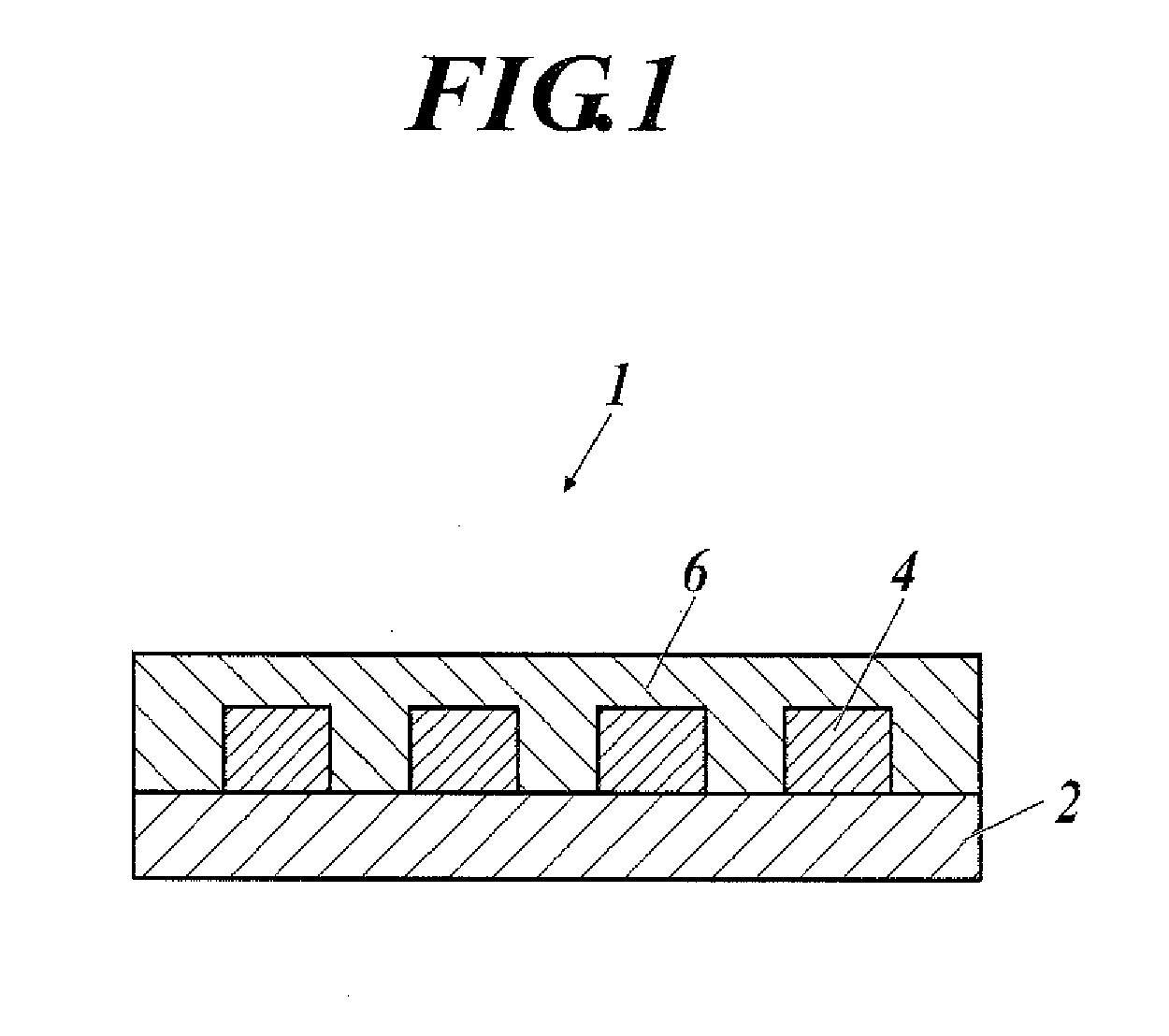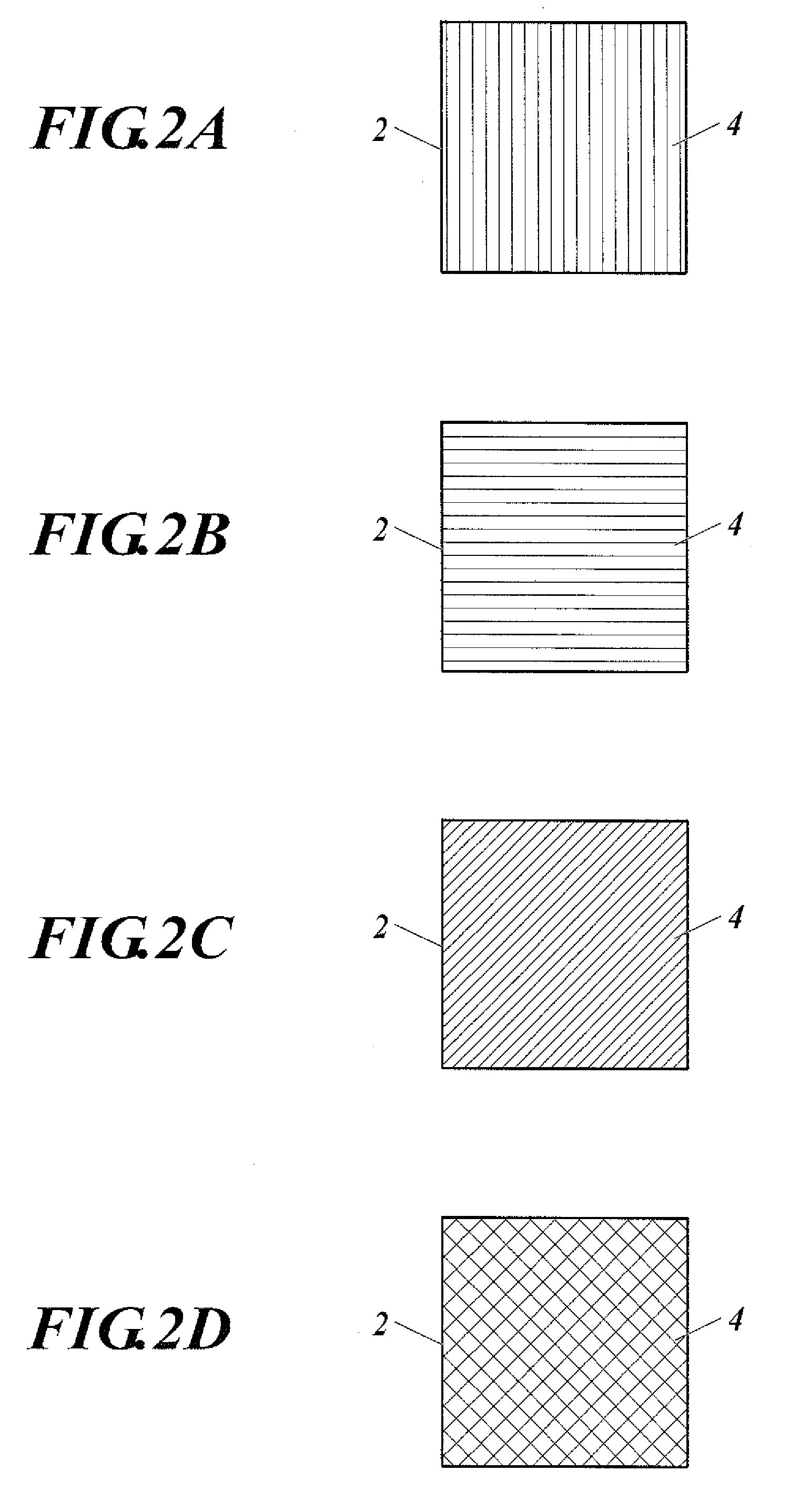Composition for forming transparent electrode, transparent electrode, organic electronic element, and method for manufacturing transparent electrode
- Summary
- Abstract
- Description
- Claims
- Application Information
AI Technical Summary
Benefits of technology
Problems solved by technology
Method used
Image
Examples
examples
[0178]Hereinafter, embodiments of the invention are more specifically described with examples. However, the present invention is not limited thereto. Note that “parts” and “%” used in the examples stand for “parts by mass” and “percent by mass (mass %)”, respectively, unless otherwise specified.
[0179](1) Manufacture of Transparent Substrate
[0180](1.1) Formation of Smooth Layer
[0181]To a no-undercoated side of a 100 μm thick polyethylene terephthalate film (Cosmoshine A4100 manufactured by Toyobo Co., Ltd.), a UV curable organic / inorganic hybrid hard coat material OPSTAR Z7501 manufactured by JSR Corporation was (i) applied with a wire bar in such a way that the average thickness thereof after application and drying was 4 μm, (ii) dried at 80° C. for three minutes, and then (iii) cured at 1.0 J / cm2 as a cure condition under the air atmosphere using a high-pressure mercury lamp. Thus, a smooth layer was formed.
[0182](1.2) Formation of Gas Barrier Layer
[0183]Next, on a sample substrate...
first example
[0206](1) Preparation of Composition (Samples) for Forming Transparent Electrode
[0207]Each of Samples 1-1 to 1-26 of compositions for forming transparent electrodes (compositions for discharge by inkjet printing for forming conductive polymer layers) was prepared as follows; to be an ink concentration (polymer concentration) shown in TABLE 1, a conductive polymer P-1, namely, Clevios PH750 (1.08% liquid, manufactured by Heraeus Holding), and a dissociable group -containing self-dispersing polymer shown in TABLE 1 were mixed at a solid ratio of 15:85, the mixture was mixed with solvents shown in TABLE 1, and water was added thereto at the end to be 100 parts by weight.
TABLE 1BINDER RESINPOLARGLYCOL(SELF-DISPERSING POLYMER)INKSOLVENTETHERSAMPLE OFMODELTg*1CONCENTRATION*2*2COMPOSITIONTYPENUMBER(° C.)(%)(%)TYPE(%)TYPE(%)1-1 VYLONALLMD-200067403.8EG 6EGPr 81-2 LMD-124561303.520EGBu151-3 LMD-150077303.7PG15PGEt101-4 303.525PGPr181-5 VYLONALLMD-200067403.8DMSO10EGBu101-6 LMD-124561303.615P...
second example
[0252](1) Manufacture of Transparent Electrode (Samples)
[0253](1.1) Preparation of Composition for Forming Transparent Electrode
[0254]Each of Samples 2-1 to 2-14 of compositions for forming transparent electrodes (compositions for discharge by inkjet printing for forming conductive polymer layers) was prepared as follows; to be an ink concentration (polymer concentration) shown in TABLE 3, a conductive polymer P-1 and a dissociable group -containing self-dispersing polymer shown in TABLE 3 were mixed at a solid ratio of 15:85, the mixture was mixed with solvents shown in TABLE 3, and water was added thereto at the end to be 100 parts by weight.
[0255]In addition, each of Samples 2-15 to 2-30 of compositions for forming transparent electrodes was prepared in the same way as that described above except that, in each of these samples, as solid contents, a conductive polymer P-1, poly(3,4-ethylene dioxythiophene) / Nafion® P-2 and a self-dispersing polymer shown in TABLE 3 were mixed at a ...
PUM
 Login to View More
Login to View More Abstract
Description
Claims
Application Information
 Login to View More
Login to View More - R&D
- Intellectual Property
- Life Sciences
- Materials
- Tech Scout
- Unparalleled Data Quality
- Higher Quality Content
- 60% Fewer Hallucinations
Browse by: Latest US Patents, China's latest patents, Technical Efficacy Thesaurus, Application Domain, Technology Topic, Popular Technical Reports.
© 2025 PatSnap. All rights reserved.Legal|Privacy policy|Modern Slavery Act Transparency Statement|Sitemap|About US| Contact US: help@patsnap.com



